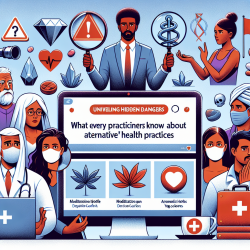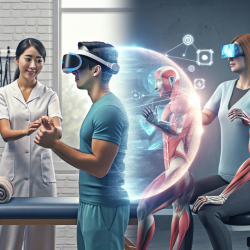Introduction
In the era of COVID-19, personal protective equipment (PPE) has become a necessary barrier between healthcare workers (HCWs) and their patients. However, this barrier often leads to a depersonalized experience, fostering fear and mistrust among patients. A groundbreaking initiative, Personal Protective Equipment Portraits Canada (PPC), has emerged to address this challenge by using smiling headshot portraits to humanize interactions and improve patient outcomes. This blog explores the research findings from PPC and how practitioners, including those in online therapy, can leverage these insights to enhance their practice.
The Impact of PPE Portraits
The research conducted by PPC reveals that 70% of HCWs who wore PPE portraits reported an increased sense of connection with patients. This simple intervention has shown to significantly improve the mood and well-being of both HCWs and patients. The study also highlighted that 89.5% of HCWs felt that these portraits positively impacted their interactions with patients, while 74% noted improved team dynamics among colleagues.
Key Findings and Practical Applications
- Humanization of Healthcare: The portraits help patients see the person behind the mask, reducing fear and enhancing trust.
- Improved Team Dynamics: HCWs reported better identification and communication with colleagues, fostering a more cohesive work environment.
- Enhanced Patient Interactions: Patients responded positively to seeing the faces of their caregivers, leading to more relaxed and effective interactions.
For practitioners in online therapy, these findings suggest that incorporating visual elements that humanize the therapist can enhance the therapeutic relationship. This could involve using personalized profile pictures or video introductions that convey warmth and approachability.
Encouraging Further Research
While the initial results are promising, further research is needed to optimize the design and implementation of PPE portraits. Future studies could explore the impact of different portrait sizes, the inclusion of names and titles, and the cultural considerations of smiling in portraits. Practitioners are encouraged to contribute to this growing body of research by experimenting with similar interventions in their practice and sharing their findings.
Conclusion
PPE Portraits Canada has demonstrated the profound impact that a simple visual intervention can have on healthcare interactions. By humanizing the experience for both HCWs and patients, these portraits are paving the way for more compassionate and effective care. Practitioners in various fields, including online therapy, can draw inspiration from this initiative to enhance their own practice and improve outcomes for their clients.
To read the original research paper, please follow this link: Personal Protective Equipment Portraits Canada (PPC)–Humanization and surveying mask-wearing nationally.










